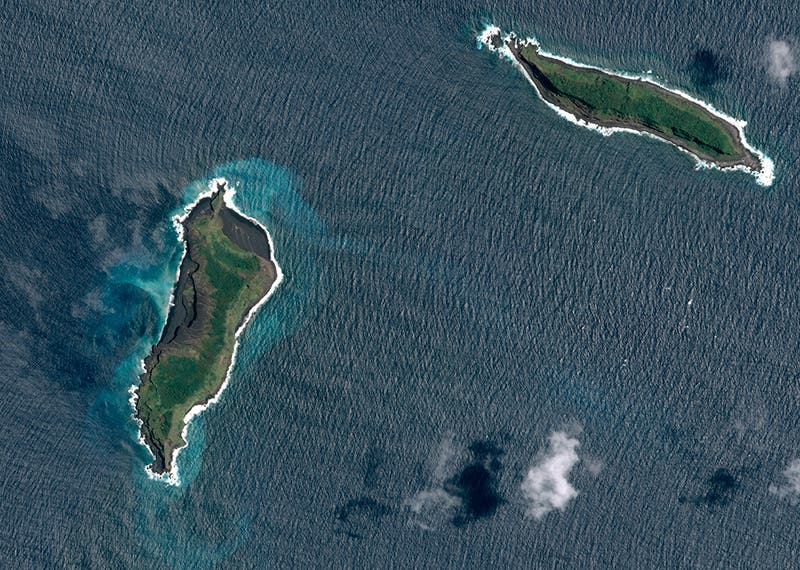An underwater volcano that’s been spewing ash and lava for the past month just created a new island off the Tonga archipelago. The volcano, called Hunga Tonga, has since stopped erupting and the island might not be long lived. Mostly made of ash and formed around the crater of the volcano, the half-mile long island is expected to erode away in just a couple of months. What makes this remarkable news, however, is that we don’t get the chance to see this kind of wild geology in action on a day to day basis.

In fact, most islands today are made from underwater volcano eruptions. The story of a volcanic island starts inside the Earth. Earth has a solid inner core. It’s made of solid metal. It is thought to be as hot as the surface of the sun! A liquid outer core surrounds the inner core. The outer core is made of metals, too. It is liquid because it is under less pressure than the inner core. Around the outer core is the Earth’s mantle. It’s made of hot rock called magma. It’s mostly solid, but it can flow like hot plastic. We live on the crust. It is the thin, outside layer of the Earth. The crust is in pieces like a jigsaw puzzle. They are called tectonic plates. The plates fit together. Forces caused by Earth’s heat sometimes push them tighter against each other. Sometimes forces pull them apart. Sometimes there are weak spots in the crust. When plates pull apart or there is a weak spot, the mantle’s hot, flowing magma oozes out.

Volcanoes are found all over Earth. Many of them are on land, but a lot more volcanoes are found under Earth’s oceans. If an underwater volcano keeps erupting, it can rise above the ocean’s surface. An island is formed. For instance, the country of Iceland formed millions of years ago from underwater volcanic eruptions. The last permanent island made by an underwater volcano near Japan. The new island is close to Nishinoshima, another uninhabited island in the Ogasawara chain of islands, which is also known as Bonin Islands. The Japan archipelago, which consists of several thousands of islands, is part of a seismically active region in the Pacific Ocean known as “Ring of Fire.”






